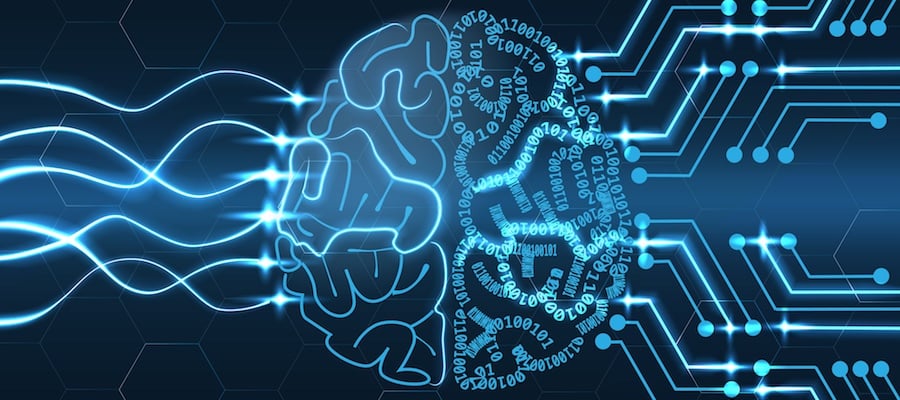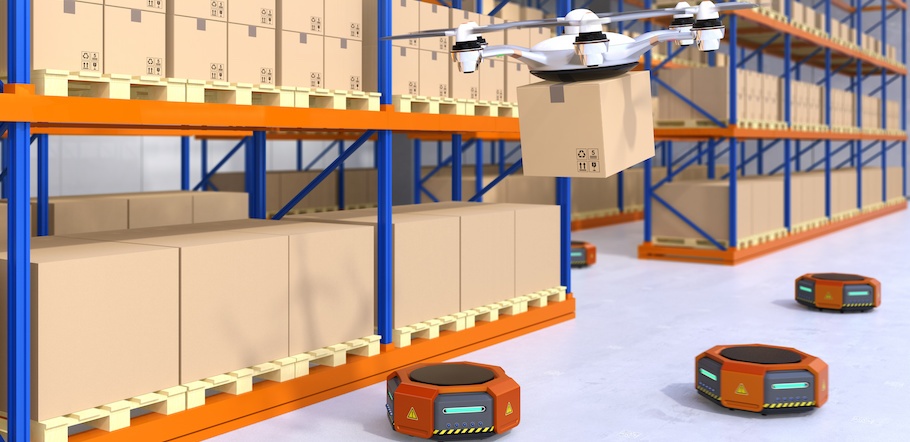
At one time, our culture was obsessed with cyborgs named Arnold and systems named Skynet. AI (artificial intelligence) was still largely theory and amusement (at best) for most people. Fast forward to today, when AI and robotics are normal; no one bats an eye when asking Alexa to buy toner on Amazon, and Google’s AI is transforming our world every day.
Hollywood may have moved on from the Terminator to a host of different villains (see: pretty much any Avengers movie villain), but do AI and robotics cause those in supply chain management to fear that ultimately their jobs will be “terminated”? To be sure, there is a level of optimism on the techs returns, but there are those who do not always share it. The “humans” are asking, will automation truly phase out the need for their services?
From a supply chain management standpoint, automation (AI, robotics, etc.) removes errors their carbon-based counterparts are apt to create, and there isn’t constant training or re-training to improve work efficiency. “Teach” a robot once, via coding, and it continues to perform until the technology is surpassed or improved upon or there is physically an issue with it. Productivity, efficiency, the lack of downtime needed for human concerns like eating and sleep––automation sounds like a dream for engineers focused on speed and efficiency.
But is supply chain automation really the cure-all it purports to be? Not exactly.
Simply put, humans are still necessary for every aspect of supply chain management, no matter how advanced automation, robotics or AI become. No matter how much programming is done, there will be a situation in which human judgment is needed. For example, automation in a sorter may be able to recognize a label on a box, but if the associates there know the customer wants their product, even boxes, in pristine condition, they have the capability to pull it off and correct the order. Sure, technically it was right––but when dealing with customers, you can’t be just “technically right.”
Quality is a collection of standards, to be certain, but ultimately it is defined by the customer––and each customer is different.
The ability to apply high-level filtering and assessment to every single box or product would require far more complexity than readily available robotics or AI are capable of right now, and those are still only as precise as their makers have designed them to be. Precision requires all components to be operating at peak efficiency and effectiveness at all times, and any individual who has owned a well-used car can attest this isn’t the case, particularly as time goes on.
The best solution to introducing AI innovation into the supply chain is a “hybrid” of humans and AI technology working alongside one another.
Great Improvements with Supply Chain Automation
Automation starts at the Gemba, where the work is performed, which is why it is becoming more visible in the modern supply chain. Smaller, routine tasks (such as labeling or moving product down an assembly line) that don’t need a great deal of judgment or input are farmed out to machines, leaving their human “coworkers” with more freedom to innovate up the chain of command.
Just as no man is an island, any AI needs a “go-between” to coordinate everything from programming cycle time to maintenance schedules; in this capacity, automation actually can create more jobs in maintenance and engineering, not sacrifice them. In fact, college students looking to enter the supply chain sphere have a host of new vocational opportunities at the hands––or, rather, the pneumatic arms––of these new, hard working machines as the technology continues to gain momentum. A four-year degree, not your thing? A vo-tech degree in maintenance or mechanics may be your ticket to the future. As AI technology improves, we will need more people to service the machines for the supply chain to keep humming along.
-
What Jobs Will Go?
When you walk into the warehouse of the future, the workforce will look different. It’s not always pleasant, but as technology advances, there are jobs that fall by the wayside. In the future, AI in the form of sorters, for example, will be able to pick a product––eliminating a staple job within the warehouse: “pickers.” These positions are heavily manual and don’t necessarily require an advanced skill set. That being said, there will still need to be the need for entry labor warehouse positions, but in different roles that complement their skill level. Certification, degrees, and specializations are the best protectors against “job outsourcing.” Human-centric career paths, such as human resources, leadership roles, maintenance, and quality can’t be so easily replicated by wires and solenoids.
In a recent article for Forbes, Adi Gaskell also writes, “This is important because history tells us technology and automation tend to create more jobs than they destroy, but we don’t tend to know what those jobs are yet.” He highlights the unique dichotomy facing forward-thinking warehouse managers:
Efficiency alone isn’t enough these days, and managers must identify and create new positions to usher in both automation and the maintenance required to keep it running.
-
What Jobs Will Stay?
Positions that already rely on computers, such as oversight, sales, and lead generation will stay “safe” in the coming tide of automation. The human element can make a big difference––particularly in B2B and B2C outreach and delivery. Other jobs that will only increase include systems engineering and quality engineering to make sure the AI technology is functioning as it should.
While we can automate site features like shipment updates––removing the burden from a live customer service agent––don’t expect to opt out of direct customer assistance just yet. Instead, the scope of their job could widen, especially in the face of remote management and “back-end” capabilities from a home laptop or desktop. This wider variety of data points can also represent a liability for cyber attacks, so make sure your network is secure before uploading live invoicing data or accessing sensitive data. Again, this element of automation and high technology opens up a new space for network reliability and IT jobs.
How Automation Changes Procedures
The narrower the so-called “uncanny valley” becomes, the more increasingly complex jobs will acquiesce to automation. Robots, for example, are programmed with the most wonderful of human abilities––imagination––and even going on to write songs about it.
In a business sense, imagine the face of a supply chain when readily available automated truck driving is an option for delivery. A company wouldn’t have to wait for the next round of cargo pickups, and the truck could drive through the night without needing to stop for sleep or food. This doesn’t mean the end of human truck drivers, however; human “companions” will likely have to tag along for liability reasons, ready to take the wheel if an automated engine were to falter in its duties or become compromised through hacking efforts.
NPR cites elevators as proof: a convenience that once needed an individual to operate them, elevators today are autonomous until they malfunction. The relationship between an elevator maintenance individual or crew is much like the coworker-like connection shared between an automated truck and its human “back seat” driver or even the sorter in the warehouse and its mechanic.

How Does This All Relate to Quality?
You might ask yourself how to connect the dots to quality. Quality should be viewed holistically, knowing that each part of a company affects the other and putting in processes and improvements that streamline work across those parts. AI that prevents cyber attacks that could cripple hardware in an automated truck is a part of the quality system, ensuring customers are receiving product quickly and safely. Removing human error from a picking and sorting process through AI is an improvement to quality. Quality is more than just documents and records, it’s a transformative mindset that is always seeking to add value to customers, and if quality is not as important as it should be in your company’s culture, you will be late to the game when it comes to AI technology.
A Timeline for Supply Chain Automation
This bold new world may come to fruition in as little as a decade. The timeline largely depends on the level of investment for expenditures on robots and programming at top companies. The best results also come from a network of companies all using the same or similar automation––trading best practices, highlighting concerns, and discovering the best placement for automated components on the warehouse floor.
The pressure from clients to move toward automation could affect supply chain partner behavior, too. If we keep transparency on the forefront, automation could be within reach sooner rather than later. If, however, companies remain hesitant and cautious, preferring instead to lean on familiar practices over new ones, your road to automation may take the scenic route.
To Sum It All Up
At the end of the day, it’s important to keep an eye on the progression of AI technology: it will eventually directly affect your business and ignoring it could put you behind a competitor…or three.
Not sure how to jump into the proverbial pool? Our New Supply Chain Technology: Best Practices eBook guides you through the process with beginner-oriented language and explanations. This allows you to make the most out of your new, and potentially automated, workspace without needing to reinvent the wheel.
{{cta(‘d532c395-c720-4fb4-b345-8b69098155f1′,’justifycenter’)}}
